Lessons From 15 Years: Integrate PR & Marketing To Maximize Results
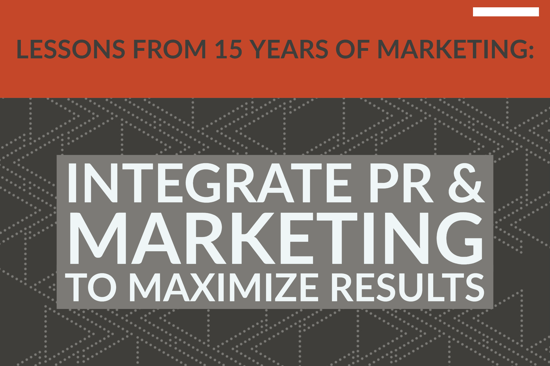
If you have been following my 15 Lessons From 15 Years series of blog posts (this is post #11), you may remember that when I discussed the key steps to successful marketing in the healthcare IT arena, I said that integrating PR and marketing was essential.
In fact, it is so important for all industries, not just that one, that I felt I needed to revisit the concept and walk you through the steps we follow to ensure that all communications create a cohesive message and focus on reaching the same corporate goals.
____________________________________________________________________
This post is one in a 15-part series looking back at the lessons learned in my 15 years as founder and owner of JONES Marketing & PR. Find two of the most recent posts in the series here:
____________________________________________________________________
My Marketing Lesson #11: Integrating public relations and marketing is essential in order to maximize the impact of cohesive branding and messaging along with the efficiencies of shared content, all with the goal of achieving corporate lead, sales and revenue objectives.
Integrating public relations and marketing efforts requires abandoning the idea that the two disciplines are inherently different and breaking down barriers that may have created silos in which each team acted independently, whether as in-house teams, outside agencies focused solely on one aspect or the other, or a combination.
When developing a truly integrated strategy for all communications, there is no room for adversarial tensions between roles as everyone recognizes the ways each element in the campaign supports the rest toward achieving corporate goals.
So where do you begin? First, bring all essential stakeholders to the table so everyone is on the same page, focused on the same goals, and sharing the same messaging across all types of content. From there, build a single, integrated campaign that encompasses all of the work those departments may have done separately in the past.
Your process should look something like this:
1. Identify your audience and theme(s).
All content, whether traditionally PR or marketing focused, needs to be created with a specific target audience in mind. Who are you trying to reach? What are their needs, problems and preferences? What do you want them to learn and do?
This means reviewing your customer personas and pinpointing a specific theme and target persona(s) for each campaign you develop.
Before you begin creating content, you need to understand the following:
-
The persona’s frustration and pain points. What are the pitfalls this person faces on the job? What keeps her up at night?
-
How you can solve the persona’s problems.
-
Where this persona looks for information. Where does she go online for research? What search terms will she use? Does she use social media?
-
What type of information and content the persona wants. Is she looking for quick information, or in-depth details? Does she prefer text, images or video?
-
The main marketing messages you want this persona to hear.
-
The core value proposition for this persona.
Based on the personas you want to target, their problems, and the solutions you want to present, develop an overall theme for each campaign. In the ideal world, you would have a campaign theme spread across all different channels, including PR, with a strategy outlining all of your campaigns for the entire year.
This template (download it for free) can provide the framework as you begin your work.
2. Determine what content you need to create.
Now, refer to my Marketing Lesson #10: Do The Data Work. If you were diligent about doing the math, you know how many leads you need to generate, and what level of website traffic and conversion will be needed in order to generate those leads. And if you’ve tracked your past campaigns, you should have an idea of how much traffic and how many leads those campaigns generated, as well as what content was created for each of them.
Do a little more math to determine how much content you need to create for your campaigns in order to achieve your goals. This should include how many downloadable assets or reports, how many press releases, thought leadership articles, blog posts, social media updates, videos, emails and more.
I know that can be tough to do, especially if you are just starting out with your first integrated inbound marketing campaign. If that’s the case, here is our campaign content recommendation for B2B marketers looking to drive online lead generation:
Minimum:
-
1 downloadable asset (whitepaper, report, checklist, webinar, etc.)
-
1 thought leadership article
-
1 press release
-
1 infographic
-
4 blog posts
-
5 social media updates for each network, including at least one linking to each blog post and the thought leadership article
-
1 outbound email
-
1 landing page and lead nurturing workflow (for the downloadable asset)
Ideal:
-
2 downloadable assets
-
2 thought leadership articles
-
2 press releases
-
2 infographics
-
1 video
-
16 blog posts
-
At least 30 social media updates for each network, including at least one linking to each blog post and thought leadership article
-
2 outbound emails
-
2 landing pages and lead nurturing workflows (one for each downloadable asset)
Of course, how much content you can create will depend on the budget you have available. The ability to tie budget and deliverables from the marketing and PR side of things directly into lead generation and sales is one of the most compelling reasons for “doing the data work.” If you need to revisit that lesson, you can find it here.
3. Create content to reach all levels of the sales funnel.
I’ve split content creation into two different steps in this article for one main reason: You need to consider your content mix from two different perspectives.
First, let’s look at content in the context of the sales funnel (aka customer sales cycle or buyers’ journey).
Even though your target personas have common needs and pain points, they won’t be looking for the same information all the time. The type of information prospects, leads, or customers are seeking depends on what stage of the buyers’ journey they are in. That stage also influences how open they are to converting on an offer and whether they will continue to seek additional information from you or be scared off by too much pressure.
It is these different needs that necessitate the creation of a variety of content to reach all levels of the sales funnel.
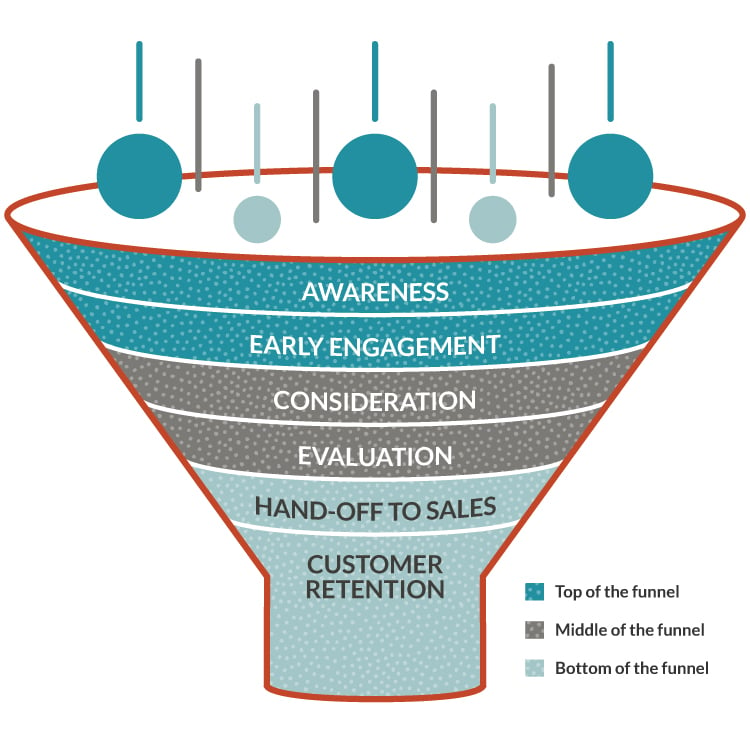
Awareness level content is meant to bring just that — awareness — to your brand. This may be the first introduction and impression a prospect gets of your business as they peruse industry media or use social media and search engines to find related content. Awareness level content isn’t meant to directly sell, and may not really even directly mention products and services, but it can begin to set the stage for prospects to learn your name and develop trust in the knowledge you have about your industry.
Awareness level content to utilize:
-
Press releases
-
Thought leadership articles (sometimes also called bylined articles or contributed articles)
-
Social media
-
Business blog posts
Much of the same content is important to early engagement level prospects, as well. They may already know about you, possibly even having followed your social media accounts or subscribed to your blog, but aren’t at the stage yet of actively seeking a solution or wanting direct information about products. What they likely want, and would appreciate getting from a trusted source, is more in-depth information, how-to guides and insights. That means blog posts focused on the next level of expertise and downloadable offers, such as whitepapers or reports that go in-depth or offer original research and data.
When leads reach the consideration level, they are looking for more solution-specific information, so be sure to include content that meets that need. This could include testimonial videos, case studies, and direct emails, possibly offering a consultation or free trial.
You should have in place an agreement between the marketing department and the sales team outlining what actions by a marketing-generated lead indicate a level of readiness to buy that justifies shifting to the sales side for a direct contact. (If you haven’t yet defined a marketing-qualified lead, this post is for you: 4 Steps To Setting Your Definition Of A Marketing Qualified Lead.)
Marketing qualified leads will need content focused on evaluation options and making a decision, which could include product information, a presentation from sales, and pricing comparisons. Another key component to an integrated approach is being purposeful in sharing all marketing content with the sales team. Those testimonial videos or whitepaper summaries may be the little extra bit of information that helps close a sale.
Don’t overlook the need for content that will continue to engage customers once the sale is complete. Content that contributes to customer engagement and retention can include ongoing access to (or reminders of) blog posts that provide useful information, follow-up surveys, exclusive or advanced access to reports, and requests for testimonials and referrals.
Your planning and content creation needs to include something for every stage of the sales funnel.
Here’s another review of how to think about and create full-funnel campaigns:
4. Create content for all channels - including traditional PR channels.
So, I’ve covered the idea of content creation from a sales funnel perspective. Now, let’s consider it from a content distribution channel viewpoint. Just as you want to cover all of the stages of the sales funnel, you also need to create content for all channels. By integrating your PR and marketing strategies, you are ensuring that the message is the same across all of those channels and, even more importantly, you are maximizing your investment in content creation by creating total packages and repurposing material across channels and stages of the sales funnel.
No more duplicating efforts because PR spent hours writing a thought leadership article and then marketing spent hours creating a separate report (complete with graphics), while you farmed out video production to an outside firm, all of which came up with slightly different messages creating each piece of content from scratch. When you integrate your marketing and PR strategies, you can coordinate content creation so that graphics, messaging, and content are shared across channels.
What channels do you currently use to distribute marketing and public relations content? While not every company or brand needs to pursue every channel (especially when you consider the myriad social media networks available), consider these four basic categories:
-
Digital (SEO, webpages, social media, email)
-
Video and visual content (including infographics< https://www.pinterest.com/JONESMarketing/jones-infographics/>)
-
Lead gen offers and landing pages (reports, webinars, whitepapers, templates)
-
Written content (press releases, thought leadership articles, blog posts)
There is, of course, overlap within these categories. Many types of written content are distributed through digital channels. Blog posts, in particular, play a large role in driving search engine rankings for your website. (More on that: Write For Readers, Not Search Engines, To Boost Blog SEO.)
Similarly, videos and other visual content, such as infographics, can be used in multiple ways, from blog posts and social media updates to press releases. By creating all of the pieces at once, you make the best use of your resources.
One example of how we have done this for clients includes our work for West, creating integrated PR and marketing campaigns for the company’s healthcare patient engagement and communications solutions. One campaign in particular highlights the many ways the same content can be deployed across multiple channels.
In 2017, JONES helped West develop a multi-faceted campaign focused on using a portion of the results from one of several surveys we have helped them implement as marketing tools over our 10+ year working relationship.
The campaign centered around the theme of “Strengthening Chronic Care,” and was anchored by a downloadable report (the lead generation piece of the puzzle) with the same name. But the content created reached far beyond that single report. Using the report as the base, the same infographics used in the report were developed into videos hosted on the company website and used as looping video at the company’s booth at the annual HIMSS conference, the largest gathering of healthcare information management systems customers and vendors.
The survey data used in the report was also used in press releases, leading to 7 different executive interviews or press briefings, plus an additional 16 independent blog and media mentions in stories, and publication of two separate infographics in USA Today.
West also used that information for its own business blog posts, social media updates, and additional thought leadership articles, all of which mapped back to the original campaign theme and the lead generation opportunity in the larger report.
Within a short time, the overall campaign delivered more than 300 marketing qualified leads, highlighting the power of content when deployed across all channels with a common theme and objective.
Learn more about the West campaign in this post — Client Success: West Turns Original Research Into Lead Generation, Media Coverage.
Now, how are you going to develop your own integrated full-funnel marketing and public relations strategy and campaigns?
My best advice: Work with a firm that excels in both PR and marketing, and that can supply all of the needed types of content for all channels. Don’t piecemeal it out to separate firms that each take a different approach.
Having started out in public relations and witnessed firsthand the missed opportunities when marketing and PR are considered separate entities with differing goals, I am now a whole-hearted advocate for integrating all communications and content development. It just makes sense.
If you’ve missed earlier installments of this 15-part blog series about the lessons I’ve learned in 15 years as an agency owner (and the years of experience prior to starting my own business) , you can find them all here. Subscribe to the Inbound Accelerator and you’ll get the rest of them delivered right to your inbox.
-1.png?width=1652&height=294&name=Jones(RGB)-1.png)

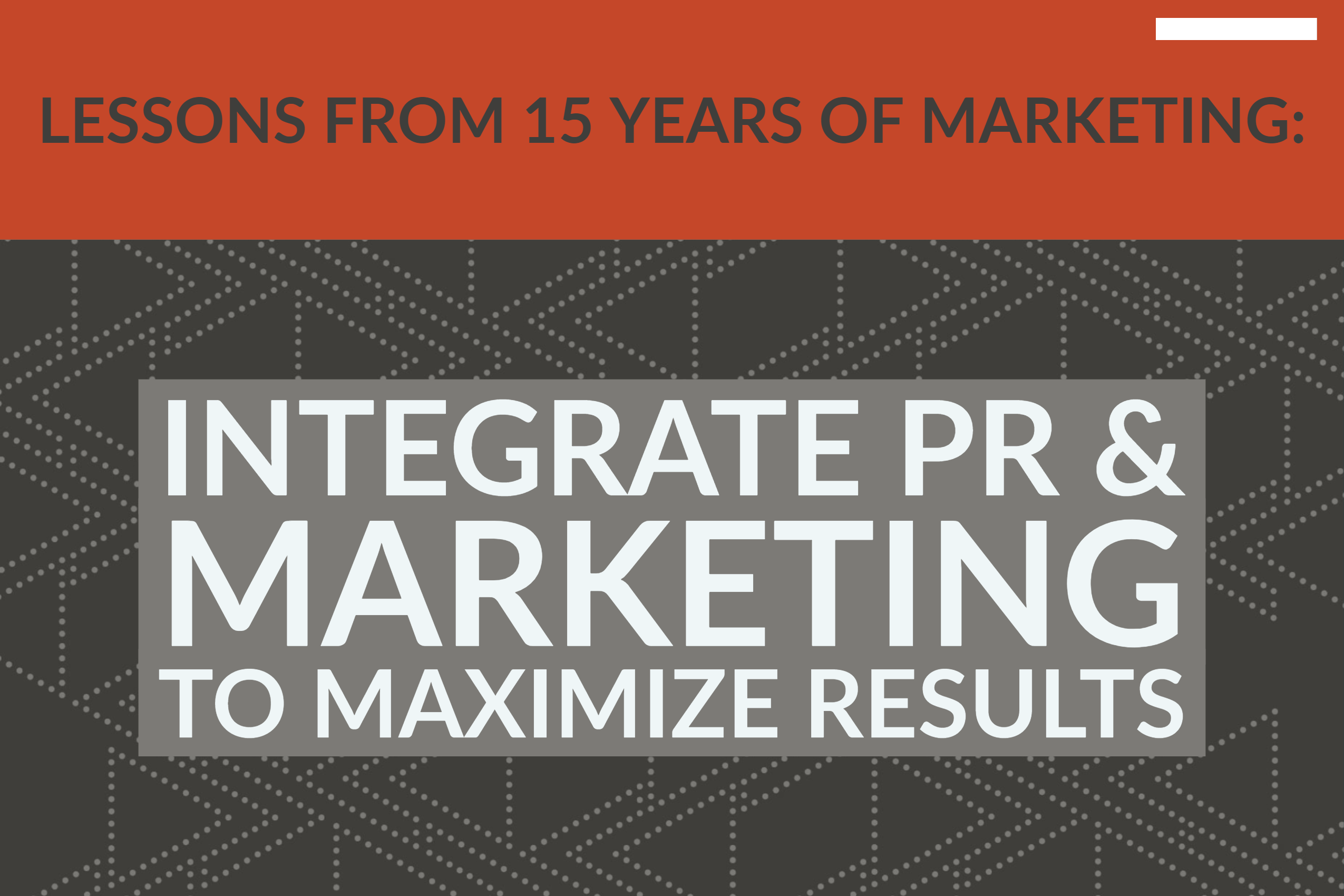
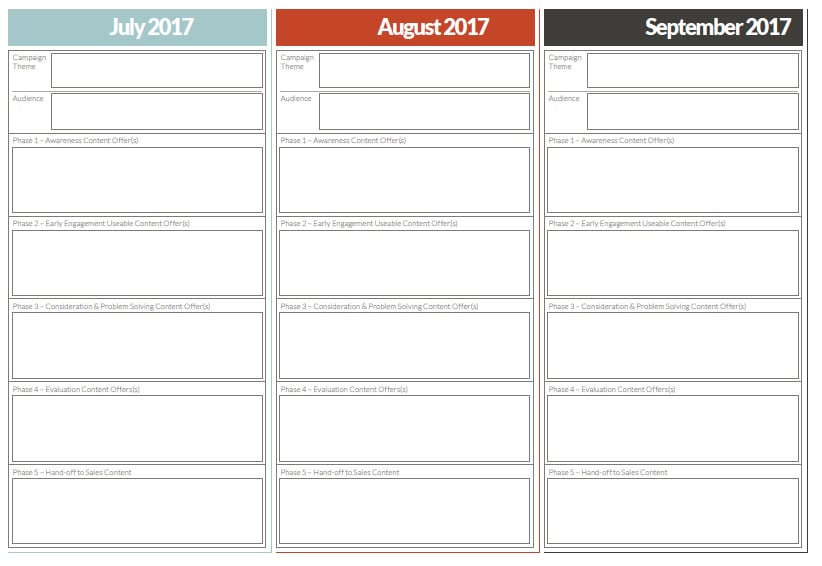






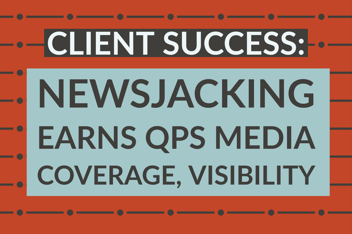
.png?width=352&name=5%20Elements%20Of%20A%20Complete%20Marketing%20Content%20Package%20(video).png)


